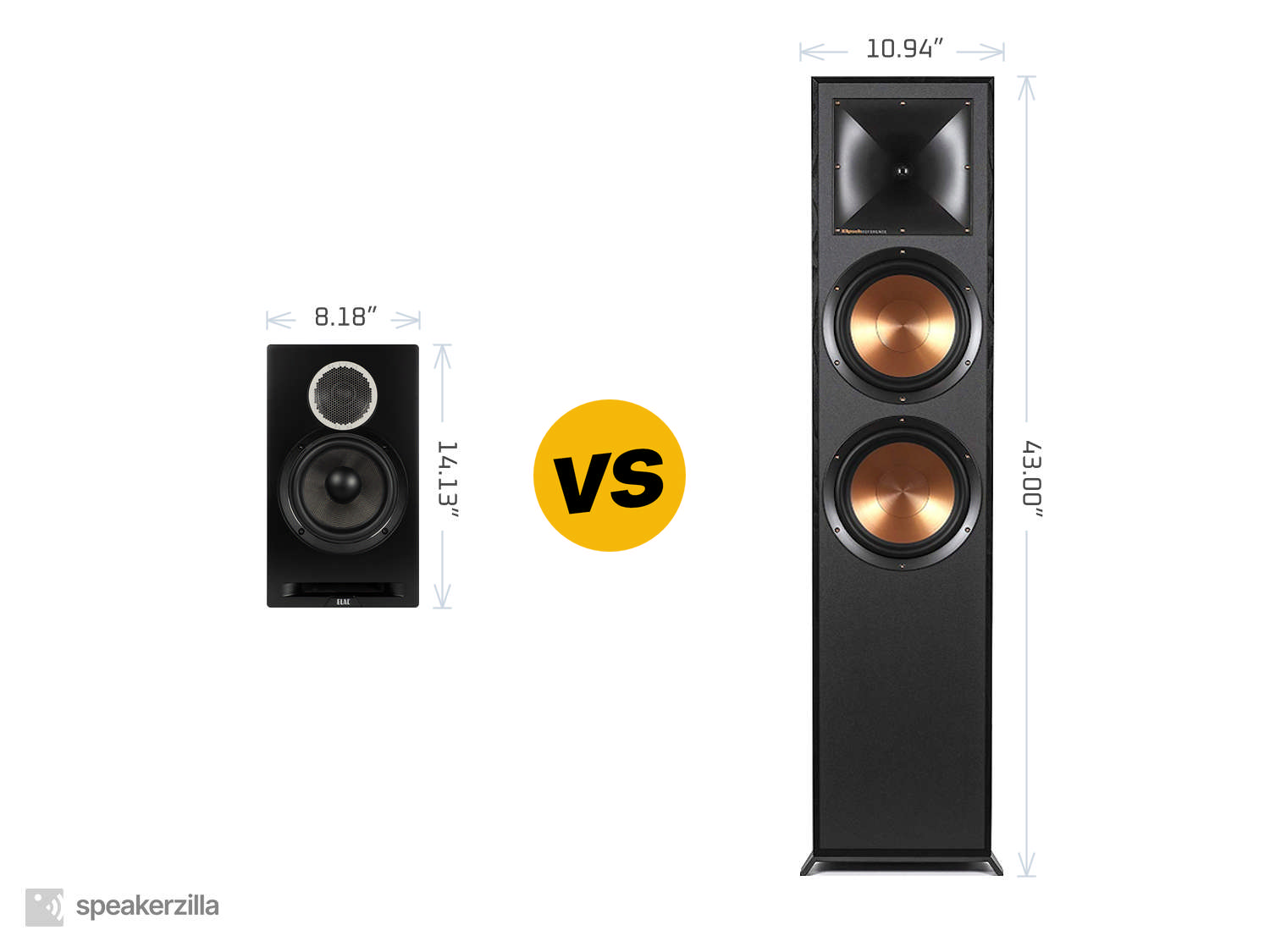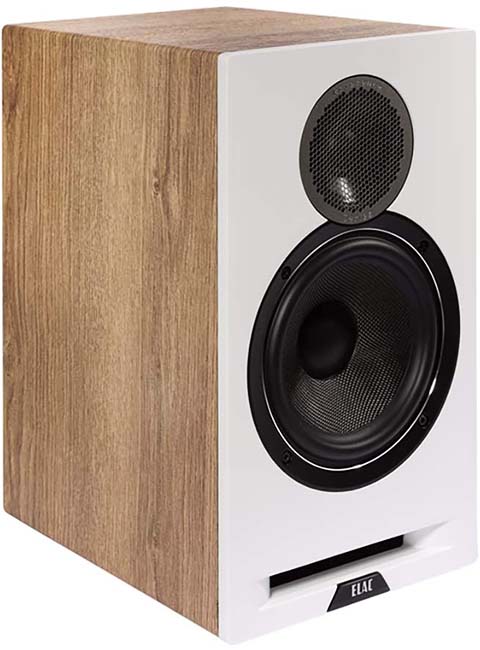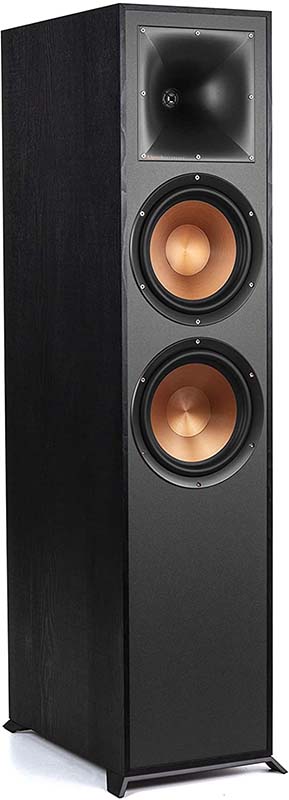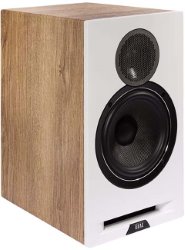ELAC Debut Reference B6.2 vs. Klipsch Reference R-820F

| ELAC Debut Reference B6.2 Bookshelf Speakers | Klipsch Reference R-820F Tower Speakers |
| MSRP | |
| $700 | $1000 |
| Dimensions (H × W × D) | |
|
14.13” × 8.18” × 10.82” 359mm × 208mm × 275mm |
43.00” × 10.94” × 17.50” 1092mm × 278mm × 444mm |
| Power Type | |
| Passive | Passive |
| Frequency Response | |
| 44-35,000 Hz | 35-21,000 Hz |
|
Amazon.com
|
Amazon.com
|
Key Takeaways
TLDR Summary: The ELAC Debut Reference B6.2 bookshelf speakers and Klipsch Reference R-820F floorstanders cater to different auditory palates within the Hi-Fi realm. The B6.2s, with Andrew Jones' signature sound, offer a refined, balanced performance, excelling in midrange clarity and soundstage precision, ideal for intimate listening environments. Conversely, the R-820F towers stand out with their dynamic, high-efficiency output, courtesy of Klipsch's horn-loaded tweeter design, delivering an impactful presence that fills larger spaces with ease. When choosing between these contenders, consider room size, desired sound profile, and whether your priority is nuanced accuracy or bold, cinematic audio.
Speaker Comparison
When it comes to high-fidelity sound, the experience of music listening can be as varied as the speakers through which the melodies flow. Today, I'm putting two contenders in the ring: the ELAC Debut Reference B6.2 bookshelf speakers, and the Klipsch Reference R-820F tower speakers. These two pieces of audio equipment come from storied backgrounds, with each manufacturer having a dedicated fan base and a distinct approach to sound reproduction. While both aim to deliver the best listening experience, their methodologies and the results are as different as vinyl and streaming.
The Aesthetic and Build
The ELAC Debut Reference B6.2s are a continuation of designer Andrew Jones's philosophy of making high-end audio affordable. Their sophisticated look, with the front baffle's contrasting finish, radiates elegance and simplicity. In contrast, the Klipsch R-820Fs exude a more imposing presence, with their taller, floor-standing design and the signature copper-colored Klipsch drivers. Both are built to a high standard, but the Klipsch, being a floor-stander, naturally commands more real estate in your listening room.

 (at Amazon.com)
(at Amazon.com)The Soundstage and Imaging
Soundstage and imaging are where the ELACs really shine. Their bookshelf design, when properly placed, creates an intimate soundstage that can be breathtaking in its precision and depth. The B6.2s have a knack for extracting the nuances from recordings, allowing each instrument to breathe and be pinpointed within the soundscape. The Klipsch R-820Fs, being larger, offer a broader and more immersive soundstage. They can fill a space with ease, thanks to their dual 8-inch woofers, and lend a sense of scale to live recordings that smaller speakers can sometimes struggle to convey.
The Sonic Signature
Moving on to the sonic signature, the ELACs deliver a balanced and neutral sound. They don't favor any particular part of the frequency range, which makes them versatile across various genres. The highs are crisp, mids are articulate, and the bass is surprisingly robust for their size, although they may require a subwoofer to truly plumb the depths of the low end. The Klipsch speakers, on the other hand, are known for their lively and dynamic sound. The proprietary Tractrix horn-loaded tweeter imparts an energetic treble response that can make the sound seem more forward, which some listeners adore while others may find it a touch assertive.

 (at Amazon.com)
(at Amazon.com)The differing sound signatures are a reflection of the brands' philosophies: ELAC aims for accuracy and faithfulness to the source material, while Klipsch seeks to recreate the live music experience with vibrancy and impact. The ELACs might be the preferred choice for the discerning audiophile who craves purity, while the Klipsch will appeal to those wanting to feel the power and emotion of a live concert.
Compare to similar speakers
Power Handling and Efficiency
One technical aspect we can't overlook is the power handling and efficiency of these speakers. The Klipsch R-820Fs are highly efficient, making them easier to drive, even with a modest amplifier. They also handle more power, which translates to higher potential volume levels without distortion. This makes them suitable for larger rooms or for listeners who crave the visceral impact of high volume levels. The ELAC B6.2s are less efficient and might require a more substantial amplifier to achieve their best performance. They can sing with a lower-powered amp, but to really show what they're capable of, they appreciate a bit more muscle.
In conclusion, both the ELAC Debut Reference B6.2 and the Klipsch Reference R-820F speakers present compelling cases for themselves, but they cater to different listener preferences and room requirements. The ELACs excel in creating an intimate, detailed soundstage, perfect for nuanced listening sessions, while the Klipsch towers are all about the grandeur and excitement of a live performance. Ultimately, your choice might come down to personal taste, listening habits, and space considerations. Either way, both offer an engaging route into the world of high-fidelity audio that will be sure to enhance your listening pleasure.
- ELAC Debut Reference B6.2 reviews and FAQs
- Klipsch Reference R-820F reviews and FAQs
Check Current Prices: |
|
|
Amazon.com
|
Amazon.com
|
Affiliate Disclosure: As an Amazon Associate, we earn from qualifying purchases.

